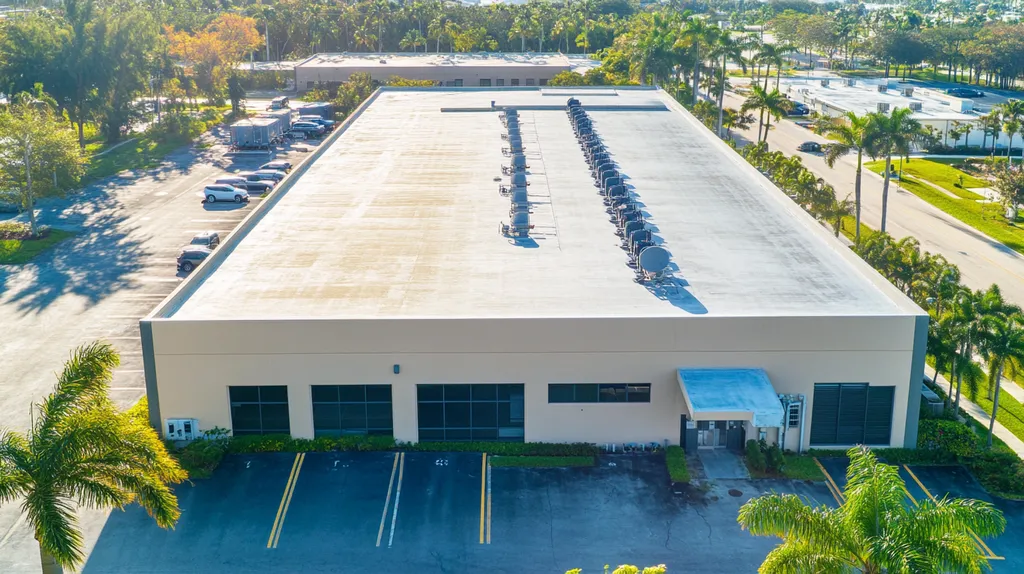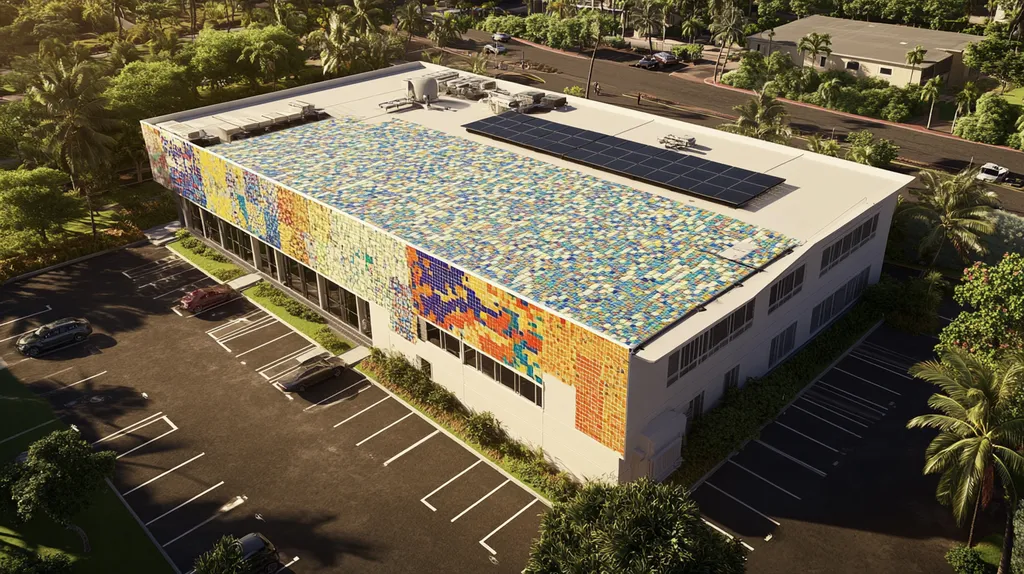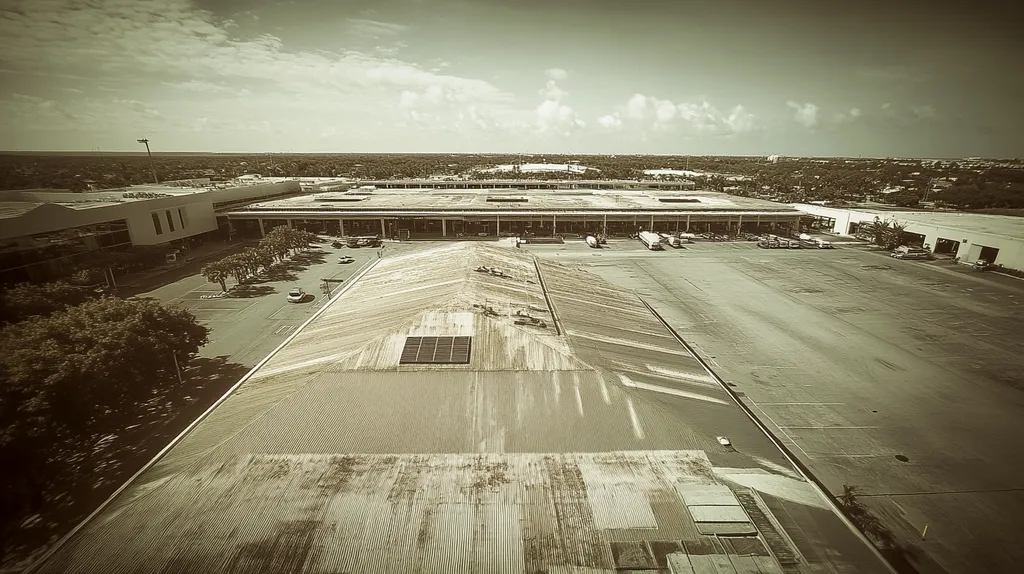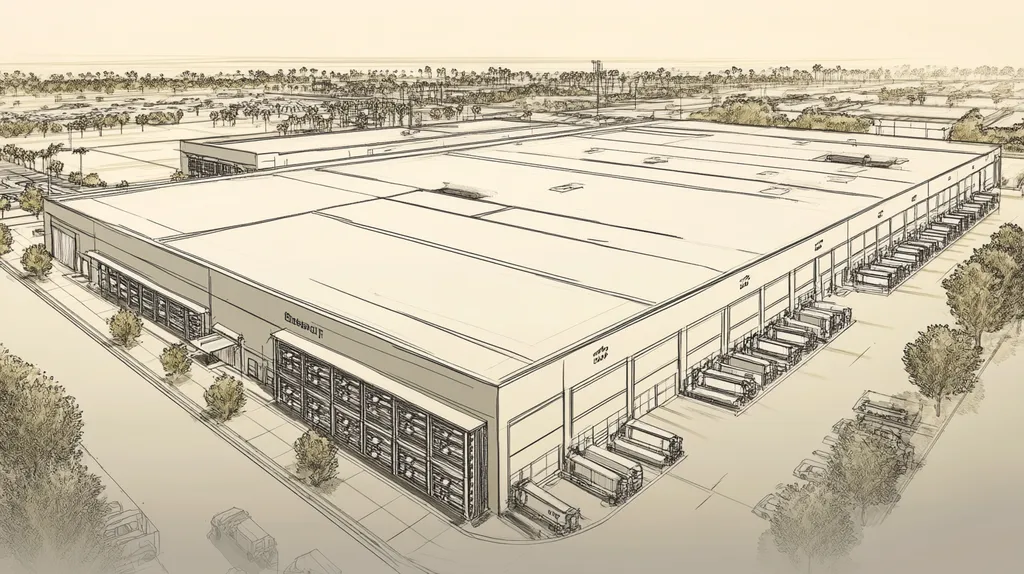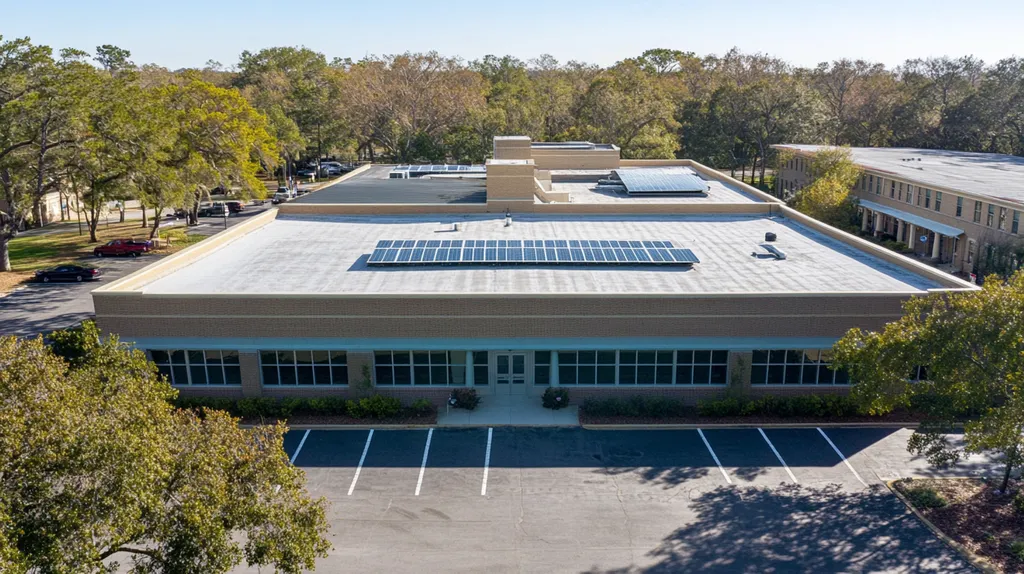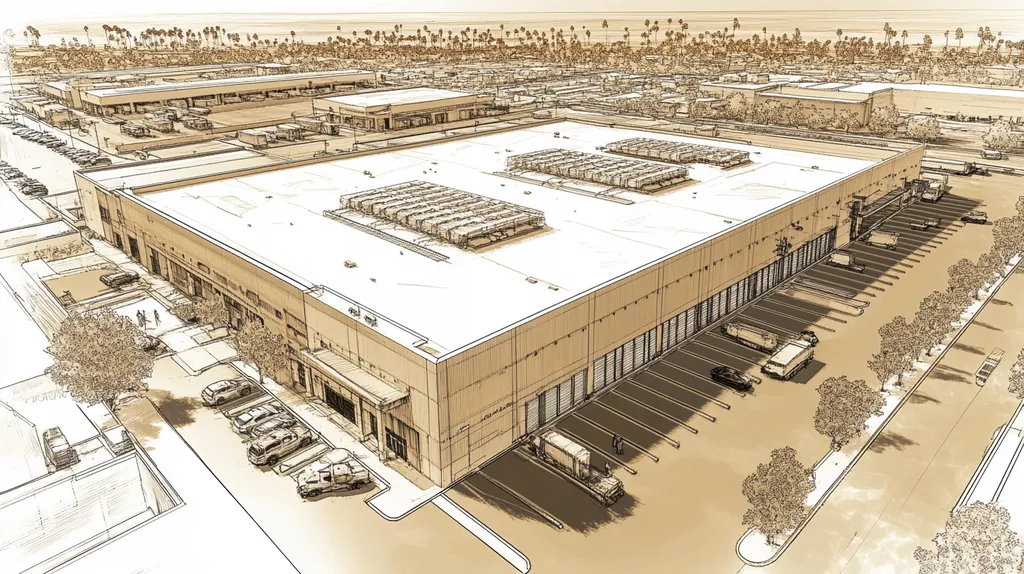Every year, over 50 commercial roofers lose their lives due to preventable accidents during routine inspections, according to OSHA statistics. These sobering numbers underscore why safety protocols aren’t just regulations—they’re lifelines.
From fall protection systems to proper inspection techniques, implementing comprehensive safety measures protects both workers and property owners from devastating consequences.
This definitive guide explores the critical components of conducting safe commercial roof inspections, examining everything from fundamental safety concepts to advanced technological solutions that are reshaping industry standards.
SECTION 1: FUNDAMENTAL CONCEPTS
Ensuring safety during commercial roof inspections is paramount to protecting both the workforce and the property involved. The National Roofing Contractors Association reports that falls account for a staggering 43% of accidents among roofing personnel, particularly during inspections. By instituting robust safety protocols, risks can be mitigated, and costly liabilities avoided. This section delves into the critical nature of safety, the prevalent hazards faced, and the regulatory standards that oversee roofing inspections.
Importance of Safety in Commercial Roofing
Prioritizing safety in roof inspections is crucial to curtailing workplace accidents. The commercial roofing industry is fraught with hazards ranging from falls to electrical risks and exposure to toxic substances. By adopting comprehensive safety measures, companies not only shield their workers but also safeguard their reputation and financial viability.
A strong safety culture fosters an environment where team members actively identify potential hazards. This sense of shared responsibility cultivates vigilance, significantly reducing the incidence of accidents. When each individual understands their critical role in maintaining safety, the odds of injury diminish considerably.
Moreover, a proven commitment to safety enhances a company’s marketability. Property owners tend to favor contractors with robust safety records. Establishing such credibility not only attracts clients but can also lead to reduced insurance premiums, which is a financial win for any business.
In summary, safety is integral to the roofing inspection process. It protects employees, strengthens company reputation, and contributes to a more ethical work environment.
Common Hazards in Commercial Roof Inspections
Roof inspections are laden with various hazards that can result in significant risks. Chief among these dangers is the potential for falls from heights—often exacerbated by inadequate fall protection. A single misstep on a slick surface can result in catastrophic injuries, underscoring the necessity for proper harnessing and railings.
Additionally, roof materials can be hazardous, presenting sharp edges and debris. Inspectors must always don personal protective equipment, including helmets and reinforced footwear, to mitigate risks. A small oversight in using safety gear can lead to severe accidents and costly delays.
Electrical hazards are also prevalent, especially when working with rooftop units and communication equipment. Familiarity with the layout of existing electrical systems is essential to avoid shocks or fires during inspections. A strategic approach to planning and heightened awareness can substantially alleviate these risks.
Weather conditions can add another layer of complexity to roof inspection safety. Rain, high winds, and extreme temperatures can render roofs perilous, leading to slips and falls. Inspectors must always review weather forecasts and postpone inspections when conditions are unsafe to ensure their safety.
Regulatory Standards and Compliance
Compliance with regulatory standards forms the bedrock of safe commercial roofing practices. The Occupational Safety and Health Administration (OSHA) sets forth vital guidelines for roofing contractors aimed at ensuring worker safety. These directives cover everything from necessary fall protection systems to training requirements and safe ladder use.
Noncompliance with OSHA regulations can result in severe legal ramifications, including hefty fines and work stoppages. By understanding and integrating these regulations into daily practices, companies can avoid significant liability issues.
Moreover, state and local laws often complement federal regulations, imposing additional adherence requirements. Property owners and facility managers must be informed about these regulations to ensure that their roofing service providers observe all necessary safety standards.
By upholding compliance, roofing contractors not only demonstrate their commitment to safety but also build trust with clients. This proactive strategy minimizes accidents, creating a secure working environment for everyone involved.
SECTION 2: SYSTEM COMPONENTS
In the high-stakes world of commercial roof inspections, safety must take precedence at every turn. With falls accounting for a chilling 33% of fatalities in the construction industry, it is imperative to equip workers with the right safety components. Proper safety gear not only helps prevent accidents but also ensures the well-being of the workforce. This section discusses essential safety measures including personal protective equipment (PPE), fall protection systems, and critical inspection tools.
Personal Protective Equipment (PPE) Requirements
Personal protective equipment (PPE) serves as the frontline defense during a roof inspection. Essential items include hard hats, safety glasses, and gloves, which shield workers from falling debris and sharp objects commonly encountered on roofs.
High-visibility vests are equally crucial, as they ensure that inspectors are easily visible, thereby reducing the risk of accidents. Depending on the specific roof type, specialized footwear may be necessary to provide the best grip and protection. Careful selection of PPE is vital to uphold safety standards during inspections.
Regular inspections of PPE are equally essential to confirm that the equipment is in good condition. Worn-out or damaged gear can compromise safety, making it imperative to replace these items as needed. Property owners have a responsibility to prioritize the availability and upkeep of suitable PPE for all inspection personnel.
Fall Protection Devices and Equipment
Addressing fall protection is non-negotiable during any commercial roof inspection. Following OSHA regulations, the use of harnesses, lanyards, and anchor points is critical to reducing fall-related risks. These devices must be utilized whenever inspectors are working at heights exceeding six feet.
Guardrails provide another layer of safety, serving as barriers around the edges of the roof. Depending on the roof design, either temporary or permanent guardrail systems may be necessary to ensure ongoing safety. Collaboration with certified professionals is crucial for property owners to identify the most appropriate fall protection systems.
In specific scenarios, safety nets may also be employed as a secondary line of defense. By implementing a range of fall protection measures, property owners can significantly minimize risks associated with roof inspections. Making these devices readily available is essential for creating a secure working environment.
Inspection Tools and Technology
The right tools and technology not only improve safety but also enhance efficiency during commercial roof inspections. For instance, drone technology can perform aerial inspections, eliminating the need for inspectors to scale dangerous heights. This not only boosts safety but also provides detailed images of roof conditions.
Traditional tools like binoculars and infrared cameras play invaluable roles as well. Binoculars allow inspectors to evaluate roof conditions from a safe distance, while infrared technology can detect moisture issues hidden under the surface. Both tools facilitate thorough inspections while mitigating unnecessary risks.
Investing in mobile apps and software can further streamline the inspection process. These technologies allow for real-time documentation of findings, reducing the need for repeat visits to the site. Overall, employing modern tools and technology can significantly elevate safety and efficiency during commercial roof inspections.
SECTION 3: IMPLEMENTATION METHODS
Conducting a commercial roof inspection without proper safety precautions can lead to severe consequences, including injuries or even fatalities. Alarming statistics show that falls remain the top cause of death within the construction industry, as reported by the Occupational Safety and Health Administration (OSHA). To combat these risks effectively, it is crucial to engage in meticulous preparation, utilize efficient inspection techniques, and adhere strictly to safety protocols. This section outlines key strategies designed to guarantee the well-being of personnel throughout roof inspections.
Pre-Inspection Preparation and Planning
Effective safety measures begin long before the inspection team steps onto the roof. Property owners and facility managers must conduct a thorough site assessment to identify potential hazards such as nearby power lines, roof conditions, and unpredictable weather patterns. This initial planning phase is essential for spotting risks that might not be readily visible.
Every team member should be equipped with necessary safety gear, including helmets, gloves, and fall protection equipment. Documentation—such as safety data sheets and site maps—should also be readily available. Failing to prepare can compromise worker safety, potentially causing delays or increased costs.
Holding a pre-inspection safety briefing for all team members is indispensable. During this meeting, roles, responsibilities, and emergency procedures should be clearly defined to ensure everyone understands their part and contributes to overall safety. Effective communication is key to preventing confusion and enhancing safety during the inspection.
Additionally, ensuring that all team members are trained in the use of safety equipment cannot be overstated. Regular training sessions reinforce the significance of safety protocols, keeping the entire team informed about current regulations and best practices. This emphasis on preparation lays a strong foundation for a safe inspection experience.
Conducting Visual and Detailed Inspections
Once on the roof, inspectors should adopt a systematic approach to their evaluations. Start with a visual inspection from the perimeter, looking for visible damage or irregularities. Common issues, such as cracked flashing, missing shingles, or pooling water, can indicate deeper, underlying problems that necessitate attention.
Using a checklist can help streamline the inspection process, ensuring that no area is overlooked. This method significantly reduces the chances of missing critical issues that could result in costly repairs later. Additionally, documenting observations with photographs creates a clear record for property owners, facilitating better communication about the roof’s condition.
Following the initial visual inspection, a more thorough examination is often necessary. Inspectors should physically assess key roof components, checking seams, penetrations, and insulation conditions. Overlooking these detailed analyses can lead to unexpected complications, costing property managers both time and resources.
Visibility while conducting inspections is also paramount. Employing sufficient lighting or utilizing ladders to reach varying heights can enhance the inspection’s effectiveness. Adequate visual methods can significantly improve the likelihood of identifying existing problems before they escalate.
Using Safety Harnesses and Ladder Safety
In any commercial roof inspection, the proper use of safety harnesses is absolutely essential. All workers must wear harnesses that comply with OSHA standards to minimize fall risks. Adhering to these regulations not only protects individuals but also fosters a proactive safety culture within the organization.
Training in the correct usage of harnesses is critical. Workers must understand how to properly attach harnesses to secure anchor points; without this knowledge, the equipment’s effectiveness is severely compromised, increasing fall risks exponentially.
Ladder safety must also be prioritized during inspections. Only stable, heavy-duty ladders should be utilized, positioned securely on level ground. Inspectors should maintain three points of contact while climbing to maximize stability at all times.
Furthermore, it is vital to inspect ladders before use to identify any issues such as worn rungs or weak joints. Taking these precautions promotes a safer working environment and ensures that the inspection process proceeds smoothly.
SECTION 4: MAINTENANCE REQUIREMENTS
In the realm of commercial roofing, overlooking maintenance can lead to significant safety hazards and financial headaches. An alarming study indicates that 70% of roof failures stem from insufficient maintenance. For property owners, understanding the necessity of regular inspections and upkeep is essential to prolonging the life of roofing systems. This section will explore effective inspection schedules, essential cleaning practices, and strategies for addressing common roofing issues, all to enhance safety and longevity.
Regular Inspection Schedules and Checklists
Creating a regular inspection schedule is vital for maintaining commercial roofing systems. It is generally advised that inspections be conducted at least twice a year, ideally during spring and fall. Utilizing detailed checklists can significantly improve the thoroughness of these inspections, ensuring that every critical area is examined.
Focus should be placed on regions most prone to wear, including flashings, seams, and penetrations. Inspections following severe weather events are also crucial to assess potential damage. By committing to a structured inspection frequency alongside a checklist, property owners can proactively identify issues before they escalate into major problems.
Incorporating technological advancements, such as drone inspections, can provide a comprehensive overview of roofs, allowing for the examination of hard-to-reach areas. This modern method can uncover hidden issues while protecting the investment in the roofing system. Regular inspections nurture a culture of safety and ongoing maintenance that benefits every facet of the facility.
By prioritizing inspections, property owners can greatly extend the lifespan of their roofing systems. This proactive approach not only mitigates risks but also emphasizes the significance of maintenance for overall safety.
Cleaning and Maintaining Roofing Systems
The importance of proper cleaning and maintenance of roofing systems cannot be understated. The accumulation of debris can lead to water pooling, which accelerates deterioration. Regular cleaning of gutters and drains is essential for ensuring proper water flow and preventing leaks.
Property owners should implement seasonal clean-up routines to eliminate build-up of dirt, leaves, and other obstructions. A clean roof promotes optimal performance, which also facilitates easier and more effective inspections. Establishing a regular cleaning schedule is integral to maintaining the integrity of roofing materials.
Employing appropriate cleaning products is critical to avoid damaging roofing systems. Harsh chemicals can degrade protective membranes, leading to premature failures. Routine maintenance should include a close inspection and resealing of areas showing signs of wear, which enhances overall roof longevity.
Communicating cleaning and maintenance schedules to facility staff fosters accountability. Educating personnel on the significance of roof cleanliness strengthens the effectiveness of the maintenance protocols implemented.
Addressing Common Issues and Repairs
Swiftly addressing common roofing issues is essential to avert further complications. For instance, unaddressed leaks can compromise building structures and lead to tenant dissatisfaction. Early warning signs, such as water spots or mold growth, if ignored, can escalate minor issues into costly repairs.
Proactive measures include identifying frequently susceptible areas, like expansion joints and roof penetrations. Regular monitoring and quick responses can save substantial costs over time. Additionally, enlisting trained professionals for repairs ensures that issues are resolved correctly on the first attempt.
Routine maintenance empowers facility managers to identify problems early, reducing the severity—and cost—of necessary repairs. By systematically approaching issue management, property owners can foster a safer environment for both staff and visitors.
Collaboration with contractors who specialize in roofing offers invaluable insights into best practices for maintaining commercial roofs. Continuous education on repair techniques can further equip facilities personnel to effectively handle common roofing challenges.
SECTION 5: PERFORMANCE METRICS
The safety and functionality of a property hinge on the integrity of its commercial roof. Inadequate evaluations can lead to disastrous failures, costing businesses significant financial losses and endangering the lives of occupants. Alarmingly, estimates indicate that about 30% of roofing failures are the result of insufficient inspection procedures. This section focuses on the critical components of assessing roof integrity, evaluating drainage and ventilation systems, and identifying potential failure points, ensuring a thorough understanding of a roof’s condition.
Evaluating Roof Integrity and Condition
Assessing a roof’s integrity is vital to prevent unforeseen failures. Inspectors should embark on a visual assessment, vigilant for signs of wear such as cracked shingles or sagging structures. These indicators can provide insight into the roof’s remaining lifespan and pinpoint areas that demand immediate attention.
A comprehensive inspection also involves examining potential moisture intrusion points. Roof seams and flashings frequently facilitate leaks, and their condition serves as a telltale sign of underlying problems. Regular monitoring of these areas fosters early intervention, minimizing repair costs in the long run.
Non-destructive testing methods, including infrared thermography, unveil hidden moisture issues that may otherwise go unnoticed. This technology empowers inspectors to identify problem areas concealed from plain sight, significantly reducing the risk of undetected water damage.
Documenting these findings is essential for monitoring the roof’s health over time. Detailed reports inform maintenance schedules and financial planning, thus ensuring that resources are wisely allocated for future repairs.
Assessing Drainage and Ventilation Systems
Optimal drainage and ventilation are critical to prolonging the lifespan of roofs. Blocked drains or insufficient drainage lead to water pooling, heightening the risk of leaks and structural damage. Inspectors should prioritize clearing drainage paths, ensuring that all gutters and downspouts are functioning correctly.
Ventilation, too, plays a pivotal role in maintaining a roof’s integrity. Inadequate ventilation can result in heat buildup, which compromises roofing materials and diminishes their effectiveness. Regular inspections are essential to check for obstructions and confirm that ventilation systems are appropriately sized for the roof area.
Early detection of issues within these systems can prevent costly repairs. The National Roofing Contractors Association reports that a staggering 75% of roof failures can be linked to ventilation problems. Proactive assessments not only protect the roof but also the building structure and its energy costs.
Documenting the conditions of drainage and ventilation systems yields valuable data for future maintenance decisions, enabling property managers to prioritize repairs based on severity and potential impact.
Identifying Potential Failure Points
No inspection is complete without pinpointing potential failure points. Critical areas like roof edges, membrane seams, and penetrations often exhibit the first signs of wear. Regularly monitoring these locations can extend the overall lifespan of the roof.
Engaging with performance metrics, such as the rate of deterioration, assists in quantifying the likelihood of failure. Property owners should collaborate with roofing professionals to establish benchmarks that indicate when repairs are necessary, or when a roof requires replacement.
For example, significant wear in a five-year timeframe may signify inadequate materials or flawed installation methods. Tracking this information also informs future roofing projects, averting the repetition of past mistakes.
Ultimately, fostering a culture of proactive identification of failure points enhances safety and accountability among facility managers. By addressing vulnerabilities before they culminate in failure, building owners can protect their investments and ensure sustained operational success.
SECTION 5: PERFORMANCE METRICS
The safety and effectiveness of a commercial roof are vital to the overall functionality of any property. Incomplete evaluations can lead to disastrous failures, which are not only financially burdensome but can also endanger occupants. Alarmingly, it’s estimated that about 30% of roofing failures arise from poor inspection practices. This section discusses key methods for assessing roof integrity, examining drainage and ventilation systems, and identifying potential failure points to maintain a thorough grasp on the condition of a roof.
Evaluating Roof Integrity and Condition
Assessing a roof’s integrity is essential for avoiding unexpected structural failures. Inspectors should initiate a thorough visual examination, searching for evident signs of damage such as cracked shingles or sagging. These visible markers can significantly indicate the roof’s lifespan and help highlight immediate areas needing repair.
Moreover, inspectors must closely examine areas prone to moisture intrusion. Roof seams and flashings can often be the source of leaks; monitoring their condition is crucial. Regular checks can facilitate early intervention, thus minimizing future repair expenses.
Utilizing advanced detection methods, such as infrared thermography, can reveal hidden moisture problems. This technology allows inspectors to spot issues that might not be immediately visible, substantially lowering the risk of concealed water damage.
Detailed documentation of these assessments is necessary for tracking a roof’s health over time. Thorough reports can inform maintenance schedules and financial planning, ensuring budgetary resources are wisely allocated to needed repairs.
Assessing Drainage and Ventilation Systems
Effective drainage and ventilation are critical to prolonging a roof’s lifespan. Clogged drains or inadequate systems can cause water to pool, significantly raising the risk of leaks and structural damage. Inspectors should consistently evaluate these drainage paths to confirm all gutters and downspouts are functioning properly.
Ventilation is equally vital; inadequate airflow can lead to heat buildup, degrading roofing materials and reducing their effectiveness. During inspections, it’s important to check for any obstructions in the ventilation systems and ensure they are sized appropriately for the roof area.
Identifying drainage and ventilation issues early can save substantial repair costs. According to the National Roofing Contractors Association, up to 75% of roof failures may originate from ventilation-related problems. Proactive assessments protect not only the roof but also the building’s overall structure and energy efficiency.
Keeping comprehensive records of drainage and ventilation conditions offers valuable insights for future maintenance, allowing property managers to prioritize repairs according to urgency and impact.
Identifying Potential Failure Points
No roof inspection is complete without pinpointing potential failure points. Critical locations, such as roof edges, membrane seams, and penetrations, are often the first to exhibit wear. Regular monitoring of these areas is essential for extending the overall life of the roof.
Implementing performance metrics, like monitoring the deterioration rate, provides a quantifiable measure of impending failures. Property owners should collaborate with roofing specialists to develop benchmarks that identify when repairs are necessary or when a roof requires replacement.
For example, significant wear observed within a five-year period might signal inadequate materials or subpar installation methods. Keeping track of these findings will aid in informing future roofing initiatives, helping avoid recurrence of past errors.
Ultimately, fostering a proactive identification approach to potential failure points cultivates a culture of safety and accountability among facility managers. By addressing vulnerabilities before they escalate into serious issues, building owners can protect their investments while ensuring ongoing operational success.
The Bottom Line
Every year, over 50 preventable deaths occur during commercial roof inspections, highlighting why safety protocols remain the cornerstone of responsible facility management.
The evolution of roofing safety, from basic guardrails to today’s integrated fall protection systems and drone technology, demonstrates the industry’s commitment to protecting workers and property owners alike.
As commercial roofing continues advancing with synthetic materials and automated inspection tools, the fundamentals of safety preparation, proper equipment usage, and regulatory compliance become increasingly critical.
Moving forward, facility managers who prioritize comprehensive safety measures while embracing emerging technologies will not only protect lives but also preserve their vital roofing assets for decades to come.
The cost of neglecting safety protocols far exceeds any temporary savings, making thorough safety implementation the only viable path forward in commercial roof maintenance.
FREQUENTLY ASKED QUESTIONS
Q. Why is safety crucial during a commercial roof inspection?
A. Safety is essential to mitigate risks encountered during inspections. Accidents, especially falls, can lead to serious injuries and liabilities. Prioritizing safety measures protects workers, enhances company reputation, and fosters a responsible work culture.
Q. What types of personal protective equipment are necessary for an industrial roof inspection?
A. Essential personal protective equipment includes hard hats, safety glasses, and gloves. High-visibility vests improve visibility, while specialized footwear offers necessary protection. Regular inspections of this equipment ensure its effectiveness and safety during inspections.
Q. How should I prepare for a commercial roof inspection?
A. Proper preparation entails conducting thorough site assessments and ensuring all team members are equipped with safety gear. Holding pre-inspection briefings to clarify roles and responsibilities is vital for enhancing safety and preventing confusion.
Q. How often should I schedule commercial roof inspections?
A. It is recommended to schedule inspections at least twice a year, ideally in spring and fall. Following severe weather events also warrants immediate inspections to identify and address potential damage before it escalates.
Q. What tools should be used for inspecting a commercial roof?
A. Effective inspection tools include drones for aerial views, binoculars for distant evaluations, and infrared cameras for moisture detection. Utilizing these technologies enhances safety while ensuring thorough inspections without unnecessary risks.
Q. How do I assess the drainage and ventilation of a commercial roof?
A. Inspect drainage systems to ensure they are clear and functioning properly. Evaluate ventilation to confirm that airflow is adequate, preventing heat buildup, which can deteriorate roofing materials and reduce lifespan.
Q. What are common repairs needed for an industrial roof?
A. Common repairs include fixing leaks, replacing damaged flashing, or resealing seams. Routine monitoring helps identify these issues early, enabling proactive repairs that extend the roof’s life and prevent larger problems.

